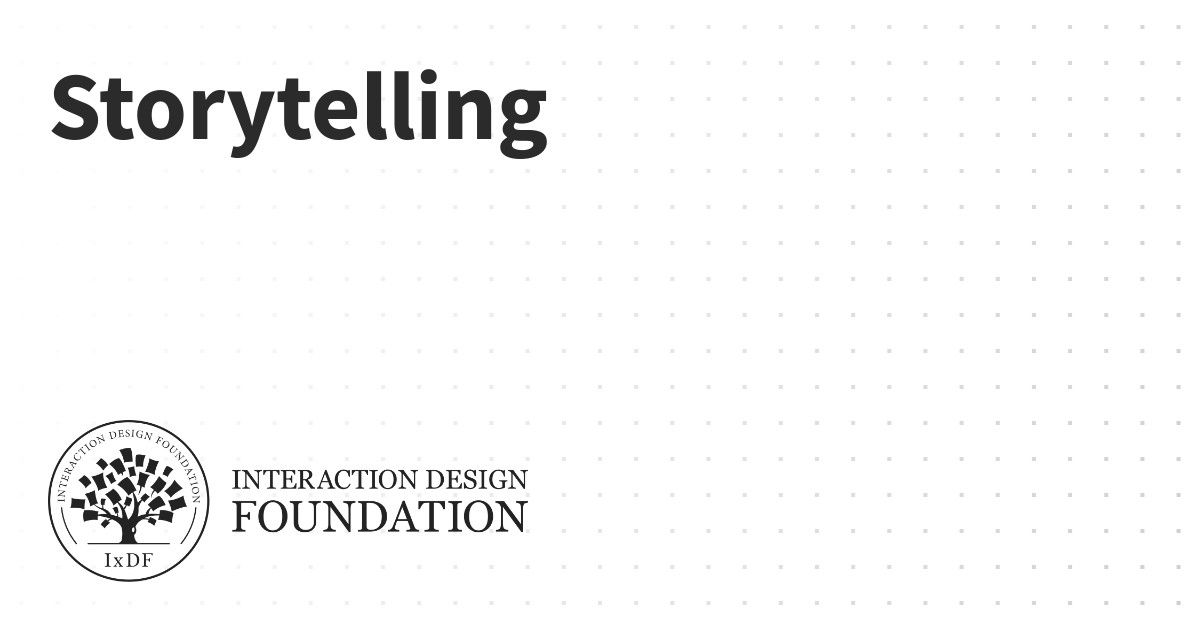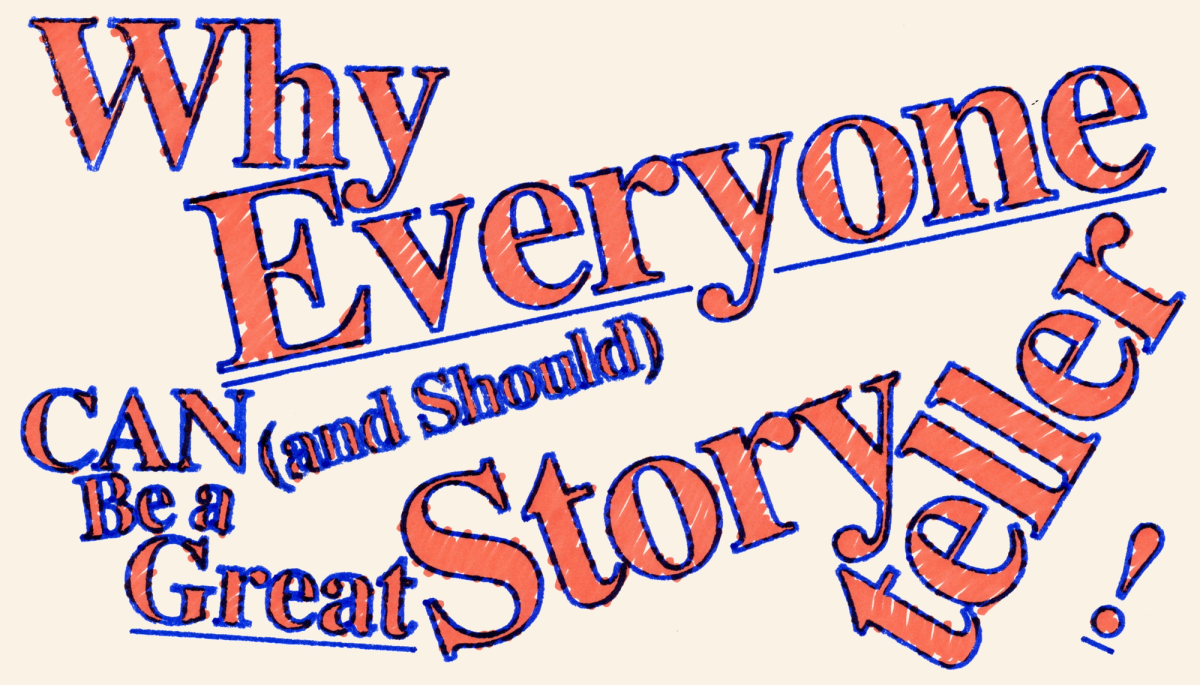- Links for Thinks
- Posts
- 🔗 🧠 #17 Storytelling for Designers
🔗 🧠 #17 Storytelling for Designers
A deep dive into using storytelling to design and explain your ideas

Five resources every week with actionable takeaways to make you a better designer.
We hear it all the time. You need to tell better stories. Be a good storyteller. The concept is so simple, but when we take a step back and look at it—storytelling is a pretty complex skill that has a lot of moving parts. Let's dissect what storytelling actually is and how to use it when designing and explaining your ideas.
— Jake
TODAY'S EDITION

OH! THE PLACES YOU’LL GO!
We all know what a story is. The concept is simple. Highlight ideas and values by creating an emotional connection. Have a beginning, middle, and end. Make the listener care about what happened, instead of just knowing what happened.
Easier said than done. For the seemingly simple stuff, it’s always a good idea to take a step back to make sure we really understand the mechanics.
THE JUICE
Beyond "Once Upon a Time": Storytelling isn't just for books and movies. It's how we make sense of the world. For designers, it's the difference between showing features and creating experiences that resonate on a human level.
What Makes a Story Work: Turns out we nailed the formula thousands of years ago, and it still applies:
Plot: The journey your users are on
Character: The real people behind the personas
Theme: The deeper truth your product represents
Setting: Where and when your solution fits into their lives
Conflict: The obstacles users need to overcome
Connection Over Information: People forget features but remember feelings. The most compelling stories aren't technical specs—they're about transformation. How does your product help users become who they want to be?
The Mirror Effect: Great UX storytelling reflects users' reality while showing them possibilities. Your design becomes the bridge between where they are and where they want to go.

IDEAS TO IMPACT WITH WRITING
The best products, designs, and ideas come from people who can clearly articulate their vision. At companies like Microsoft and Slack, writing has become a way to think deeply, communicate clearly, and get buy-in for ideas. And good writing inevitably lends itself to good storytelling.
THE JUICE
If You Can Dodge a Wrench, You Can Dodge a Ball: If you can think, you can write. Stories start somewhere. Most people are better writers than they believe—they're just comparing rough drafts to polished final pieces.
Break Through the Blank Page: Banging your head against a wall staring at another blank canvas? Try explaining your idea to a friend or recording yourself talking about it. You'll find your natural way of speaking is usually clearer than the formal voice we slip into when writing.
Hook Your Readers: The best storytellers don't start with boring background and context—they pull you right into something fun and interesting. After you write that first draft, look at your opening paragraph. Often, you can just toss that in the garbage and start with paragraph two, where the juicy stuff starts.
Make a Map: Think of your structure like giving directions to a friend:
Use clear headers so people know where they are
Make each paragraph lead naturally to the next
Stick to one main idea per section
Mix up your sentence lengths to keep things flowing
Make It Make Sense: When tackling complex topics, use examples people can actually visualize. Being new to a topic isn't a weakness—it helps you explain things in ways that make sense to everyone else who's also new to it.
Cut the Fluff: When editing, be merciless with unnecessary words. Replace weak verbs with stronger ones. Always step back and ask: "Would someone new to this topic actually get what I'm saying?"

MAKE THEM SEE WHAT YOU SEE
Got the night sweats before presenting your project or ideas? You're not alone. Storytelling isn't only useful for designing things—it's also crucial for selling ideas. Chris Abad—who's led design teams at Google, Square, and Dropbox—points out that most designers fall into the same trap: chronologically trudging through research, problems, and solutions—burying the good stuff at the end. There's a better way to structure your story so your ideas actually land.
THE JUICE
Start With the Vision: Don't bury your peak moment behind context. Frontload what the world looks like when everything works well, then work backwards through the obstacles and your solutions. Hook them early or risk losing them to something else more exciting.
Know Your Audience: What a CEO needs to hear is v different from what your design team needs. C-suite folks want to know outcomes for customers and revenue, not your step-by-step design process. Change altitude based on who's in the room.
Outline First, Visuals Later: Most presentation tools force you to start with slides, derailing your narrative. Beginning with an outline helps you nail the structure before getting lost in visual details.
Try Speaking Before Writing: Record yourself talking through your outline, then transcribe it. There's a natural gap between written and spoken communication. Your verbal explanations often have more authentic flow than your carefully crafted sentences.
Keep Slides Minimal: When slides are text-heavy, people read instead of listening to you. The purpose of visuals is to reinforce what you're saying, not replace it. Make your talk track the star, not your slides.
Leave Room for Discussion: Fill about two-thirds of your time with content and save the rest for questions. The discussion is where people figure out how they fit into your vision—and that's often where the real buy-in happens.

TWO FRAMEWORKS FOR BETTER NARRATIVES
We’ve established not everyone is a natural born storyteller, but that doesn't mean you can't create compelling narratives. With the right frameworks, you can transform meandering anecdotes into focused stories that resonate with folks and ultimately drive better design decisions.
THE JUICE
The Story Triangle: Great storytelling is a three-way conversation between the story, the storyteller, and the audience. Your audience actively fills in gaps with their own experiences—which is powerful but risky. Include enough details to guide them, but leave room for their emotional involvement.
The Story Mountain: Structure your UX stories using the story-mountain (aka hero’s journey) template:
Start with exposition: Introduce your user with relevant details
Build with rising action: Establish the problem and raise the stakes
Reach the climax: Show how the problem impacts your user
Navigate falling action: Outline steps taken to solve the problem
End with resolution: Reveal whether the solution worked
Find the Detail Sweet Spot: Too few details let imaginations run wild; too many ruin engagement. Adjust based on your goals—more details to focus on specific problems, fewer to inspire new solutions.

TOO MUCH OF A GOOD THING
As is the case with all things good, there is definitely some murky area when it comes to design and storytelling. Just like you don't want to be over reliant on other aspects of information—like data—you don't want to lean too heavily into the power of story if it might have a longer term negative effect.
THE JUICE
The Narrative Trap: Those carefully crafted user journeys can lead your team astray without you even realizing it. We're all naturally drawn to stories that make sense—even when reality tells a different tale.
Detail Blindness: The more specific a story, the more we tend to believe it. In one study, 41% of designers made statistically improbable assumptions based on a single detail. We get so caught up in the story that common sense takes a backseat.
The Explanation Trap: Our brains aren’t fond of randomness. When data shows a high exit rate, we might immediately blame the design instead of considering that it might just be random noise from having too few visitors. We'll believe almost any explanation over no explanation.
Myth-Making in Action: Remember being told that "digital natives" just get technology? That story makes perfect sense in our heads but falls apart when you actually watch young people struggle with poor interfaces.
Reality Checks: You can't eliminate these biases, but you can protect your work:
Ground your stories in actual people and research, not assumptions
Before solving a problem, make sure it's actually real
When a story feels too perfect, ask: "What evidence backs this up?"
THANKS FOR READING—SEE YOU NEXT WEEK
In the meantime, feel free to:
Forward this email or share this link with your friends if you feel they need some links for thinks: https://www.linksforthinks.com/subscribe
Reach out with any suggestions or questions for the newsletter.
Send me some of your favorite links and takeaways.
Cheers, Jake




